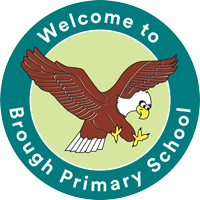Intent
To ensure a high-quality computing education which equips pupils to use computational thinking and creativity to understand and change the world (National Curriculum).
To build upon children’s knowledge and understanding from EYFS to Year 6 following the expectations of the National Curriculum.
To enable children to build and apply a repertoire of knowledge and skills linked to the three strands of the National Curriculum: Computer Science, Digital Literacy and Information Technology
To ensure children are aware of responsible internet usage and know how to keep themselves safe online.
Aims
The national curriculum for Computing aims to ensure that all pupils:
- can understand and apply the fundamental principles and concepts of computer science, including abstraction, logic, algorithms and data representation
- can analyse problems in computational terms, and have repeated practical experience of writing computer programs in order to solve such problems
- can evaluate and apply information technology, including new or unfamiliar technologies, analytically to solve problems
- are responsible, competent, confident and creative users of information and communication technology.
Implementation
At Brough Primary School, we use a range of educational sources such as National Centre for Computing Education (NCCE), Rising Stars Switched On, Twinkl and ProjectEVOLVE resources as a basis for providing a clear and comprehensive scheme of work in line with the National Curriculum.
Children in all year groups are exposed to a range of topics which encourage progression across the key strands of computer science, digital literacy and information technology. All children have access to the hardware and software needed to develop knowledge and skills of digital systems and their applications.
Each class has one session per week, either in the IT Suite or in their own classroom, the option is flexible as the children work from HP Chromebooks which each have their own charging station. In addition to this, children have access to further technologies such as iPads and programmable toys (BeeBots). Additional HP Chromebook slots can also be used in the IT Suite/classroom to enable cross curricular opportunities to enhance and embed their learning.
Online Safety is taught using ProjectEVOLVE resources which incorporates the statements from the UK Council for Internet Safety’s (UKCIS) framework “Education for a Connected World”. This is taught within Computing lessons and also through PSHE lessons. Through these lessons, the children have the opportunity to explore and respond to key issues such as digital communication, cyberbullying, online safety, security, plagiarism and social media.
Impact
Children will be confident users of technology, able to use it to accomplish a wide variety of goals, both at home and in school. They will have a secure and comprehensive knowledge of technology and digital systems, enabling them to confidently progress with future studies and modern life in this digital age.
Children will know how to be responsible, safe and respectful online. They are able to recognise the dangers that exist from the use of technology and articulate well about the potential risks of being online. They will be able to talk about ways to keep safe online and know what to do if they feel unsafe or see something that they do not like.
We expect most children will meet or exceed the progression of skills requirements in Computing.
We measure the impact of our curriculum by: –
● Teacher assessments made against the planned outcomes on half termly Medium Term Plans for Computing.
● Pupil discussion and feedback (pupil voice) (skills and knowledge).
● Reflective staff feedback (teacher voice).
● Monitoring by the Computing Subject Leader during learning walks.
● Opportunities for dialogue between teachers.
● Monitoring of children’s work.
● Photo evidence and images of practical learning.


